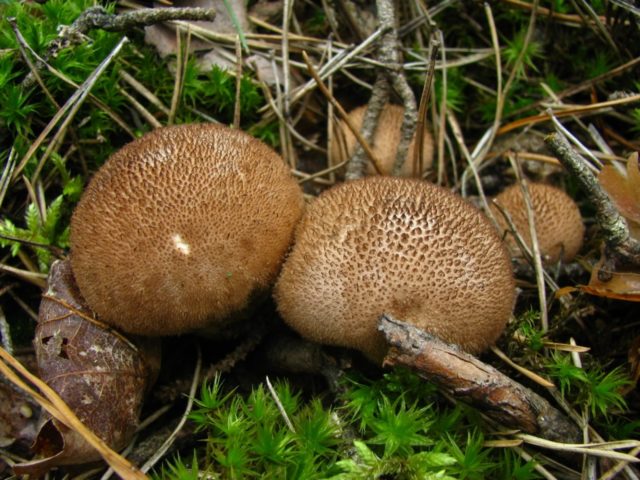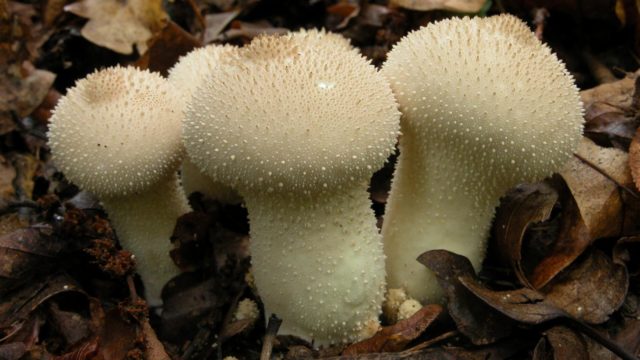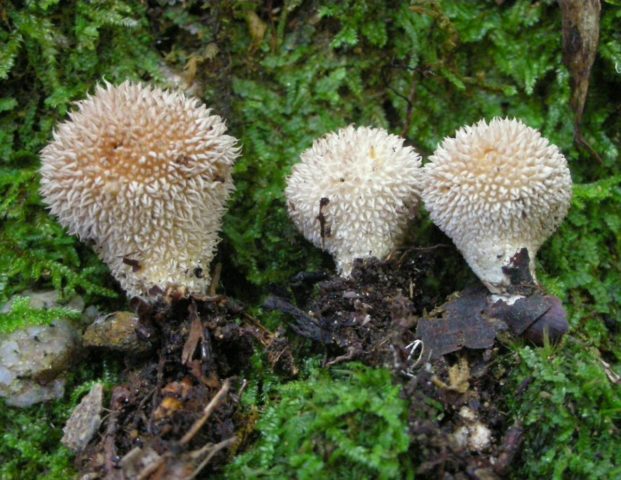Content
The smelly raincoat is a common species of the Champignon family. Its characteristic feature is the dark color of the fruiting body and curved thorns on the surface. In addition, the mushroom exudes a peculiar smell, reminiscent of luminescent gas, for which it received its name. In official reference books it is listed as Lycoperdon nigrescens or Lycoperdon montanum.
Description of the smelly raincoat
It is characterized by a non-standard shape of the fruiting body, therefore, the cap and leg of the smelly raincoat are a single whole. The surface is brown and densely covered with drooping thorns that fit tightly to each other, and thus form star-shaped clusters. The shade of the outgrowths is much darker than the main tone.
The smelly raincoat has a pear-shaped reverse shape, narrowed downward. The upper part is thickened, reaches 1-3 cm in diameter. The height is 1.5-5 cm. When ripe, thorns fall off the surface, leaving a light cellular pattern on a brown background. When ripe, a small hole appears at the apex through which the spores come out.

Outwardly, a smelly raincoat resembles a fleecy bump
The flesh of young specimens is white and firm. Subsequently, it acquires an olive brown hue, which indicates the maturation of the spores. The lower part is elongated and narrowed and resembles a leg. The spores of this species are spherical brown, their size is 4-5 microns.
Where and how it grows
This mushroom can be found in coniferous and mixed forests. It grows mainly in groups near spruce trees. It can sometimes be found in deciduous plantings, which is extremely rare. Prefers soils rich in organic matter and with an increased level of acidity.
Distributed in Europe and Central Russia.
Is the mushroom edible or not
A smelly raincoat is inedible. It must not be eaten fresh or processed. Even young specimens with light flesh are unsuitable for food, unlike other relatives of this family. However, given the characteristic smell of the mushroom, it is unlikely that anyone would think of collecting it.
Doubles and their differences
This mushroom is similar to other members of its family. To be able to distinguish between them, it is necessary to study the characteristic features.
Similar twins:
- Pearl raincoat. The fruit body of young specimens is warty, light in color. The spines are straight and elongated. As it matures, the surface becomes bare and becomes brown-ocher. In addition, the pulp has a pleasant smell. This species is considered edible, however, only young specimens should be collected. Its official name is Lycoperdon perlatum.
Due to its snow-white color, it is not difficult to find this species in the forest.
- The raincoat is black. The fruit body is initially white, and then a light brown hue. The flesh of young specimens is light, and when the spores mature, it becomes reddish-brown in color. The spines on the surface are elongated. With little physical impact, the growths easily fall off and expose the surface.A mushroom is considered edible as long as its flesh remains light. The official name is Lycoperdon echinatum.
This twin is distinguished by elongated spines that resemble hedgehog needles.
Conclusion
A smelly raincoat is not of interest to mushroom pickers. This species deserves attention due to the unusual shape of the fruit body. It will not be difficult to distinguish it from edible relatives due to its repulsive smell.










